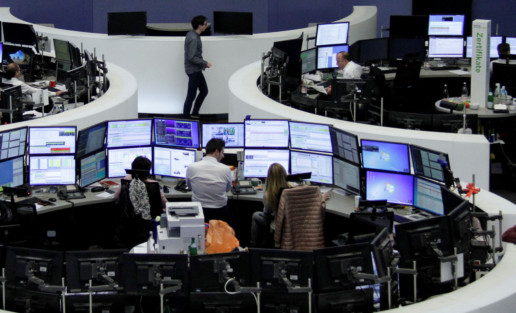
Dubai: 2017 was a good year for investors. A benchmark of global stocks rose almost 22 per cent during the year, registering its strongest gain since 2009’s rebound-from-recession, while global investment grade bonds rose more than 7 per cent, marking their biggest yearly rise since 2007.
While it’s tough to repeat this sterling performance, the broader macroeconomic outlook suggests that 2018 is likely to be another constructive year for investors.
A synchronised pick-up in global growth, which resulted in strong corporate earnings growth and rising equity valuations last year, is likely to spill over into 2018, driving stock market performance.
Meanwhile, still-subdued inflation in the US, the Eurozone and Japan reduces the risk of excessive monetary policy tightening, supporting bonds.
A valid question we get from investors is: Can this so-called ‘Goldilocks’ (not-too-hot, not-too-cold) economic environment last much longer? After an eight-year economic recovery from the last recession, we are clearly at a fairly late stage in the business cycle, with the US further along than the Eurozone or Asia.
However, history teaches us that equities tend to see some of the strongest gains in the final stages of the business cycle. This lesson is one of the factors behind our preference for equities over bonds, although it also holds true for other pro-cyclical assets such as corporate bonds.
Our preference for equities is backed by fundamental drivers. The outlook for global earnings growth remains reasonably strong, driven in many regions by expansion in profit margins. This offers grounds for further equity market gains, beyond just higher valuations. Although valuations are undoubtedly above long-term averages in most regions, they are not too stretched.
Historically, equity markets have, on average, delivered positive returns from similar levels of valuations.
Asia ex-Japan is one of our preferred equity markets, supported by both profit margin expansion as well as valuations that remain inexpensive relative to Developed Markets. The Eurozone is another preferred equity market as strong domestic consumption and the likelihood of greater corporate investment favour continued earnings growth.
The upcoming Italian elections pose a political risk, but the threat from Euro-sceptic parties has waned lately as they soften their scepticism against the euro currency. Besides, these parties face several constitutional hurdles before they can jettison the common currency.
Among bonds, we prefer Emerging Market debt as we believe it offers an attractive balance between yield and quality. Within this broader space, Emerging Market USD government bonds offer a reasonably attractive yield (at compounded 5 per cent) sourced from a mix of both investment grade and high yield government debt. While EM bonds are sensitive to rising US Treasury yields, subdued inflation means the benchmark 10-year Treasury yield is likely to remain centred around 2.50 per cent. Add to that the relatively higher yield buffer offered by the EM USD government bonds, and this makes them an attractive source of regular income.
We also prefer Asia USD corporate bonds, though we have a strong preference for investment grade over high yield within this space. One of the most remarkable characteristics of this bond asset class has been the low volatility relative to Developed Market bonds. This is likely to be valuable late in the economic cycle, especially if broader market volatility rises. China’s effort to deleverage its economy is a risk to Asian bonds, though we believe this is likely to be a greater risk for high yield, rather than investment grade, bonds.
One of the key assumptions driving our constructive view on Emerging Market assets is that the USD is likely to continue weakening modestly in 2018, short-term reversals notwithstanding, supporting continued capital flows into Emerging Markets. Our weaker USD view is based on the belief that European Central Bank has a greater chance of surprising the market by withdrawing stimulus sooner than current expectations. In contrast, further Fed rate hikes are unlikely to dramatically surprise the market.
Against this backdrop, we expect the euro to extend gains, especially if the ECB remains on the path of gradually removing monetary policy accommodation. The Japanese yen, though, is unlikely to benefit from this support given what appears to be a continued lack of domestic inflation.
A softer US Dollar is also likely to be positive for the broad Emerging Market currency universe. Within this, the South Korean won is likely to be one of the biggest beneficiaries as Korean exports gain from continued improvement in US growth.
While we remain constructive on the global economic backdrop, it is extremely difficult to time the end of the business cycle. The fact that US equities and high yield bond markets have historically peaked six to nine months ahead of a US recession makes the investment decision even harder. Inflation is the main risk to the ‘Goldilocks’ scenario, especially further into 2018. A larger-than-expected rise in inflation would mean the environment could turn too hot, forcing central banks to tighten policy sooner than expected. Given the risks, we believe there is value in entering the year favouring equities, while also starting to think about managing downside risks by allocating to alternative strategies which have lower drawdown risks and have less correlation with traditional asset classes.
Steve Brice is Chief Investment Strategist at Standard Chartered Private Bank.







